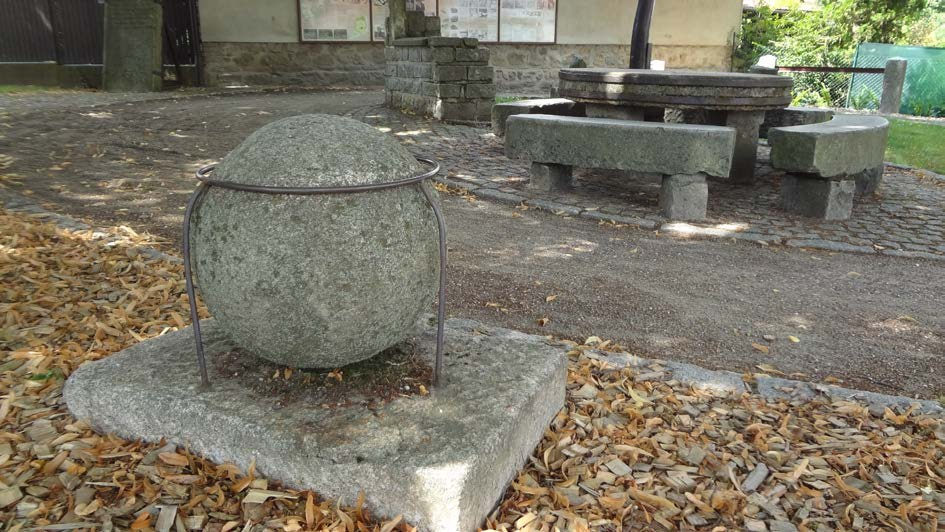Stonemasonry in the Říčany Region – Open Air Museum of Stonemasonry in Louňovice

On 15 September 2007 at the occasion of the 600th anniversary of the foundation of Louňovice, the village opened a museum of stonemasonry that features stone exhibits donated by the residents or loaned from the Vysočina Museum in Jihlava, which took the open air museum under its patronage.
It features for example granite parts of a ceiling vault, a window sill, or window molding, columns, spheres, a trough, mile post, or a gravestone. Behind the exhibits there are panels with information about the history of stonemasonry in the Louňovice Region, the types of rocks we can see in the Černokostelecko Region, and information about stone mining and working. The panels also offer information about the museum itself, and about the foundation stones in the National Theatre. Just like in the Žernovka area, people in Louňovice used the local granite as a building stone. Stonemasonry started to develop in the area in the 19th century. First stonemasons with experience in the field came to the “granite” region after 1850. The locals started to learn the craft around 1870. New quarries were established, in which the Říčany granite, also called “stone granite” because of the K-feldspar phenocryst, was mined.
In nearby Jevany, similar but a more fine-grained pinkish variety of the stone was referred to as the Jevany granite. In 1925 two organised groups of stone workers formed in Louňovice. During the economic crisis many stonemasons lost their jobs, which led to frequent disturbances in the area. Stone mining peaked here in the 1940s, but after the nationalization of the quarries in 1848 came stagnation and gradually smaller quarries were closed. The larger ones were kept in a limited operation until 1990s, owned by the state company Kámen Zbraslav. The first information panel of the nature trail “In the stonemasons’ footsteps” is placed in Horní náves in Louňovice. It briefly introduces the principles of stone mining and processing. More space is then devoted to the tools of stone-breakers, who worked in the quarries, and the tools used by stonemasons, who worked the stone once it was broken.

Photo: I. Malinová, 2016
For World of Stone provided by authors:
Barbora Dudíková Schulmannová, Vojtěch Janoušek, Tomáš Navrátil,
Václav Rybařík and Pavel Vlašímský
